Verdict
The Samsung Galaxy S24 Plus remains a solid all-rounder with a premium design, great screen, and powerful processor alongside new elements like Galaxy AI and an extended software promise, but it’s very similar to the S23 Plus, and the camera setup in particular needs some TLC.
Pros
- Galaxy AI is genuinely useful
- Larger, faster screen
- All-day battery life and then some
Cons
- Same camera setup as S22 Plus
- Exynos & Snapdragon chipset split is back
-
Bigger, brighter, better screenThe S24 Plus’ screen is not only 0.1 inches bigger than its predecessor at 6.7 inches, but it also boasts high-end tech like a LTPO-enabled 120Hz refresh rate and a maximum brightness of 2600nits to boot. -
A new focus on GenAIWith Galaxy AI, the S24 Plus can do some pretty impressive stuff, from transcribing and translating meetings to removing elements from your photos – and it all happens entirely on-device. -
Top-end performanceDespite the chipset split, regardless of whether you get the Exynos 2400 for Galaxy or Snapdragon 8 Gen 3 for Galaxy, you’ll find top-end performance with dedicated support for Generative AI.
Introduction
When Samsung announced the Galaxy S24 range, it spent much of its time focused on Galaxy AI. So much so that the actual hardware announcement fell to the wayside, and at the time, I thought it was a little odd.
But after spending the past week and a bit using the Samsung Galaxy S24 Plus, I now understand why. It’s just a bit boring.
Samsung’s latest £999/$999 smartphone is exceedingly similar to last year’s Samsung Galaxy S23 Plus, not only in terms of the overall design but much of the spec, including the camera tech which remains unchanged for a third year running.
Thankfully, it’s not all bad news; the slight screen size increase to 6.7 inches, the introduction of LTPO tech, the powerful Exynos 2400 chipset and, of course, the new GenAI-powered Galaxy AI all make the S24 Plus a tempting prospect for those that want a solid all-rounder. It’s just not that exciting anymore.
Design
- Near-identical design to S23 Plus
- Slightly larger screen
- Premium design
Samsung isn’t shifting too far away from the design of the S23 Plus with the S24 Plus. It still matches the look of the smaller S24 model, mirroring the iPhone 15 in many ways with its flat sides and back.
The size, at least for me, is nearly perfect on this Plus model. It’s far comfier to hold than the larger, boxier and heavier S24 Ultra with more rounded edges and softer corners, while offering a more usable 6.7-inch screen than the slightly cramped 6.2-inch Galaxy S24.
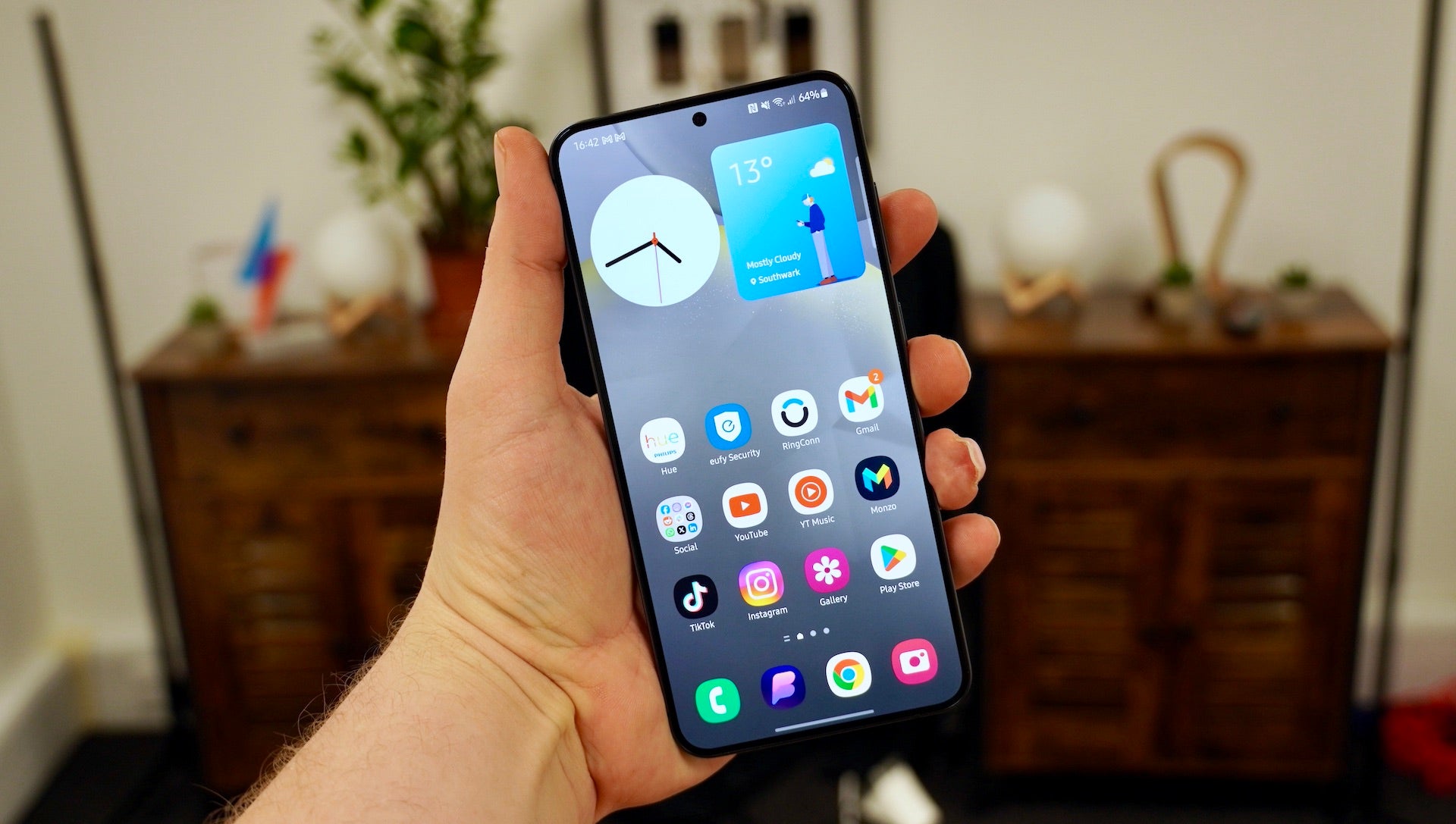
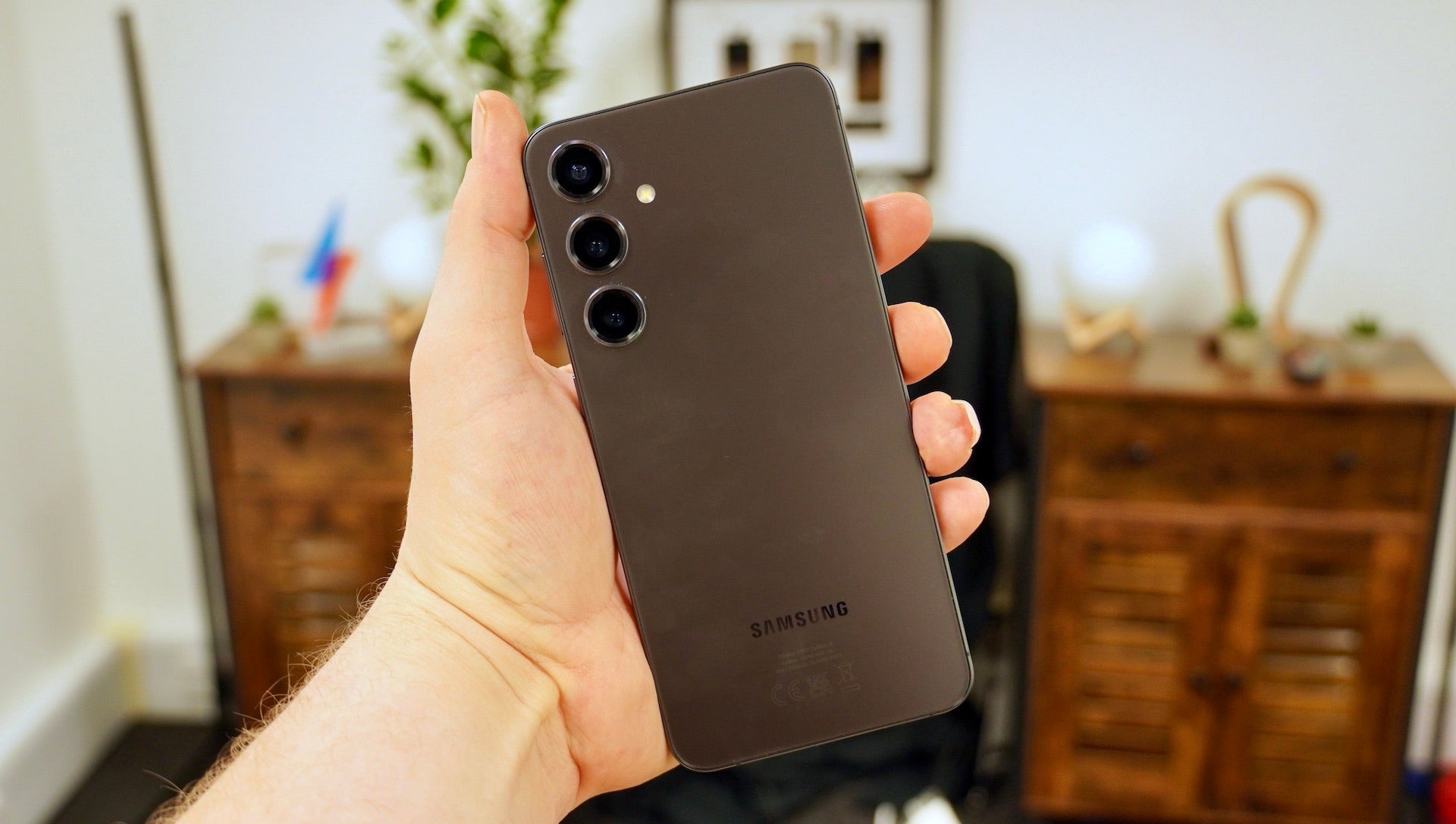
All the dimensions are very similar to the outgoing S23 Plus. However, a much slimmer uniform screen bezel allowed Samsung to increase the screen by 0.1 inches without changing the overall form factor. That sounds like a win to me, and helps the screen look premium at a glance.
Samsung has simplified the colours this time too, using the same four main hues for all models in the S24 family. These include violet, grey, black and yellow, though there are also some extra exclusive colours only available via Samsung directly, including green, blue and orange.
The black finish, which I was sent for review, feels nice, and the matte finish gives the rear and sides a nice satin-like feel.
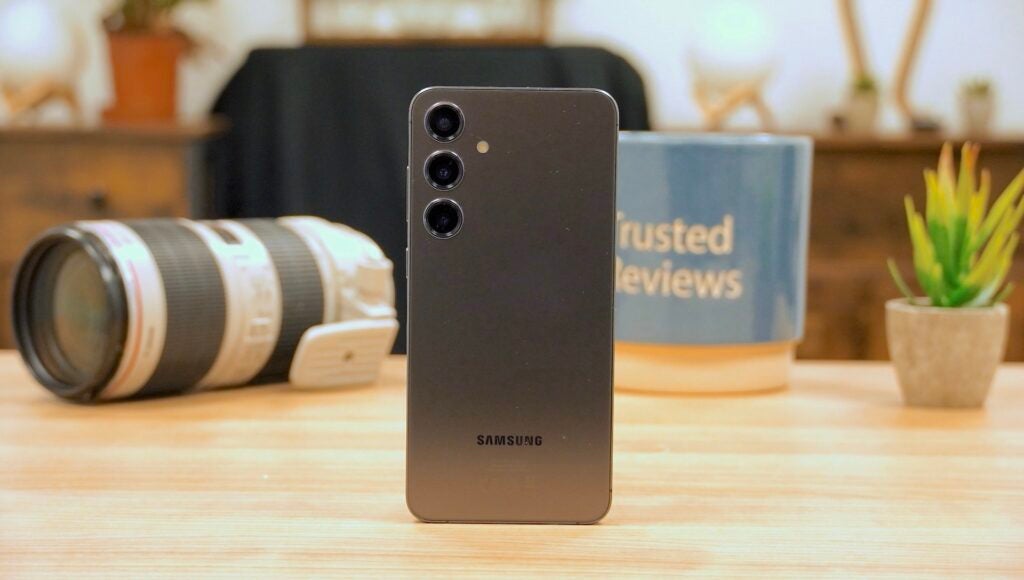

While Samsung has shifted to a titanium rim for the S24 Ultra, the S24 and S24 Plus retain an Armour Aluminium body. Samsung claims that the reinvigorated material is 17% stronger than that of the S23 series, but that’s hard to put into numbers without destroying my sample.
It certainly feels robust, and I have dropped it a couple of times during the review period without issue, but those were only relatively small drops onto the carpet. A 6ft drop onto concrete may well be a different story, even when backed by Corning’s Gorilla Glass Victus 2. At least it’ll survive a dunk with returning IP68 dust and water resistance.
There is plenty of recycled material used throughout the construction too, including steel in the speakers and cobalt in the battery. Samsung also continues to use 100% recycled paper in its packaging, which we can all appreciate.
Screen
- 6.7-inch Dynamic AMOLED 2X screen
- LTPO tech for the first time
- Bright, but not the brightest around
While the Samsung Galaxy S24 Plus might look a lot like its predecessor, there are key upgrades to the display that help it stand out.
Let’s start with the size of the phone; at 6.7 inches, it’s 0.1 inches bigger than its predecessor was, mainly down to shrinking the bezels. Though it’s not a notable difference compared to last year’s model, it does mean that the 6.7-inch panel can more directly compete with much of the flagship competition.
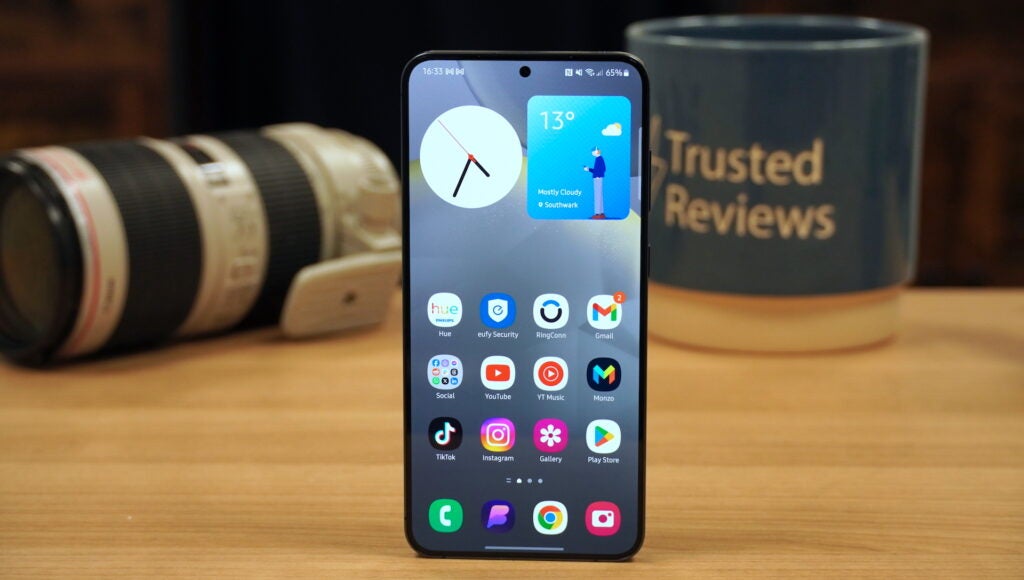

It might be on the large side for some, especially those of us with smaller mitts, but I suppose that’s why the pocketable 6.2-inch Galaxy S24 exists as an alternative.
The bigger S24 Plus upgrade is the introduction of LTPO tech for the first time. Previously exclusive to the Ultra model, Samsung has now rolled out the tech to the S24 and S24 Plus, essentially providing the screens with a way to drop down to as little as 1Hz to save battery life. This not only makes the phone more efficient, but it feels more responsive in use too.
Paired with the regular plethora of high-end tech present in Samsung’s Dynamic AMOLED 2X screens – 120Hz refresh rate, HDR10+ support, etc – it’s safe to say that the S24 Plus delivers a top-notch viewing experience. The QHD resolution, though not enabled by default, is a pixel-peeper’s dream, delivering exquisite amounts of detail in both Netflix movies and YouTube series, and it’s buttery smooth in use too.
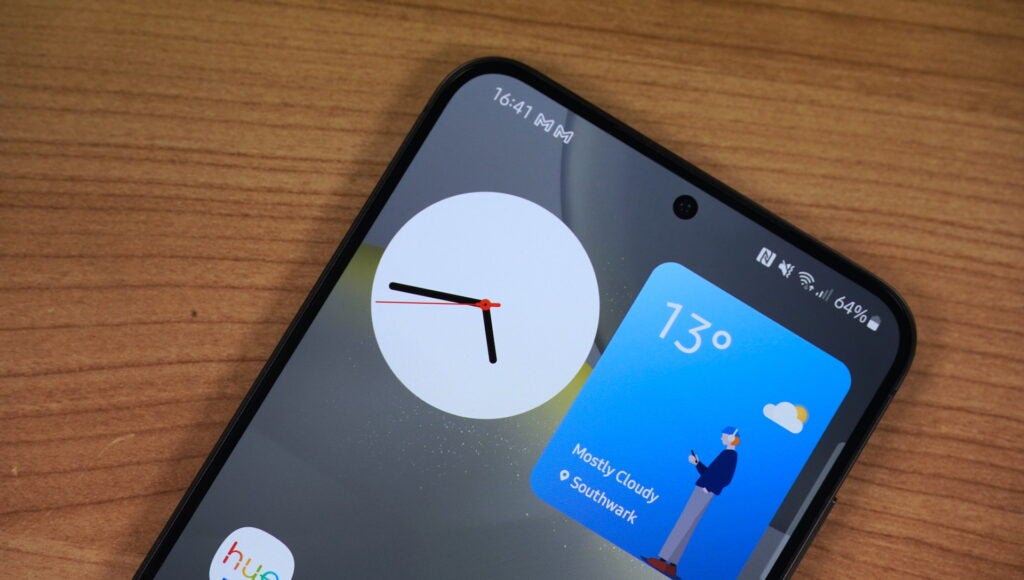

The colours may be a little too vibrant for some depending on tastes, especially reds, blues and greens, but that’s something that you can tweak from the display section of the Settings menu.
It’s also pretty bright with a peak brightness of 2600nits, and although that is quite far behind the 4600nit peak brightness of the competing OnePlus 12, it didn’t present any issues trying to use the phone in bright sunlight – well, as close as bright sunlight as you can find in London in February anyway.
Cameras
- Same camera setup for a third year running
- Main camera will be the go-to for many
- Colour tuning isn’t consistent across the lenses
If there’s one area where the Galaxy S24 Plus needs some love, it’s the camera department.
The S24 Plus sports the same combination of a 50MP main, 10MP telephoto and 12MP ultrawide as its predecessor, which in itself was a carbon copy of the camera setup used in the Galaxy S22 Plus.
That means that, aside from software enhancements, the camera experience has remained unchanged for three years. At the premium end of the market where the S24 Plus sits, that’s practically unheard of, and as such, things are starting to get a little boring.
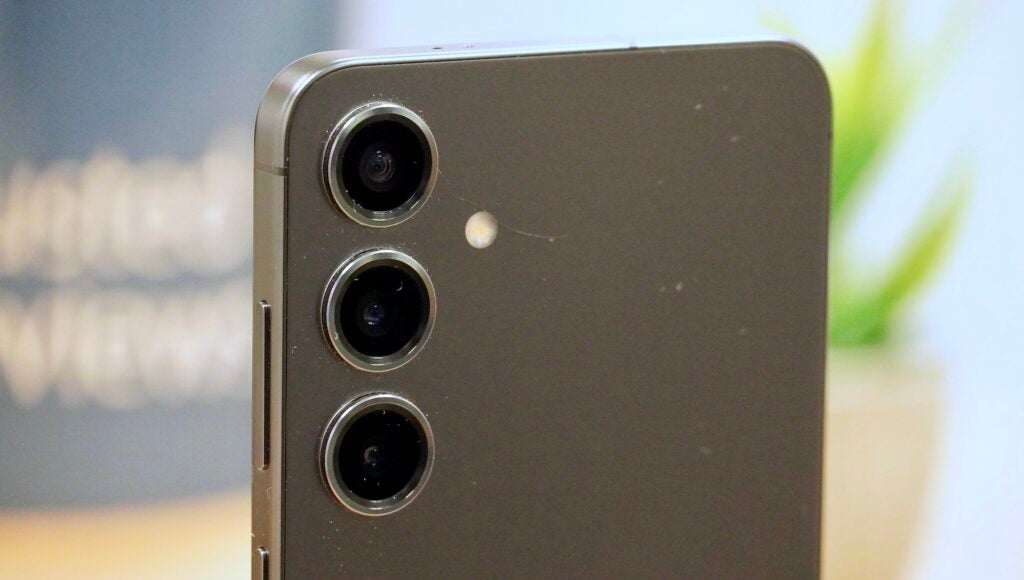

Much of the competition at a similar price point – like the OnePlus 12 – offers wholly more capable camera hardware, be it larger sensors, higher megapixel counts or better zoom performance, and that’s an odd thing to say about a Samsung flagship that costs just shy of a grand.
The worst part? It feels, to me at least, like it’s purposely neglected to push camera-focused users towards the top-end (and even more expensive) Galaxy S24 Ultra, which has seen consistent camera updates over the past few years.
That all out of the way, the Galaxy S24 Plus does a commendable job at capturing your memories. The star of the show is unsurprisingly the main 50MP sensor that, with OIS and a wide f/1.8 aperture, can handle both well-lit and low-light scenarios with ease, though the latter isn’t quite up to the standard of either the Ultra model or the similarly priced competition – especially the Pixel 8 Pro.
Most times though, you’ll be more than happy with the quality of images shot from the sensor, delivering plenty of detail, great dynamic range and vibrant colours, even if the greens and blues are unnaturally saturated in some shots.
The accompanying 10MP telephoto provides a way to get closer to the subject without physically moving, lending itself well not only to portrait photography but anything you want to zoom in on. It’s not as capable as you might hope – by the 10x mark, images look noticeably blurry compared to those shot at 3x – but it can come in handy. There is an inconsistency in colour between the telephoto and primary lenses, however.
Rounding out the trio is the 12MP ultrawide that does about as well as you’d expect from a low-res ultrawide; it does a good job at capturing wide-angle shots perfect for those scenic vistas, but images can look a little soft in places without any kind of pixel binning tech on offer.
Flip the phone over and, surprise surprise, you’ll find the same 12MP sensor that’s been used in the past few generations of Galaxy flagship. As such, the experience is pretty par for the course, which is to say that it can take a decent selfie in a pinch, but aside from video calls, you’ll likely find yourself opting for the rear camera setup.


Performance and Galaxy AI
- New handy GenAI-powered features
- Note transcription and summarisation
- Exynos 2400 can compete with Snapdragon 8 Gen 3
There’s one very clear focus with the entire Galaxy S24 family, and that’s AI. Samsung’s Galaxy AI touches almost every part of this device, from the camera to the phone and Samsung is very serious about trying to show just what its new AI system can achieve.
A lot of the AI features here will be familiar to anyone who has followed the Google Pixel line over the past few years, especially the Pixel 8 and Pixel 8 Pro. In the phone app, for example, Galaxy AI can translate and transcribe phone calls in real time.
Like with the Pixel 8, there are generative AI photo editing skills. That means that you can not only move or completely remove subjects from your photos, but you can straighten them out and get the phone to fill in the blank edges with pretty decent results too.
This specific use case does require an internet connection, however, the majority of Galaxy AI’s skills – including translation and transcription – are all done on-device.
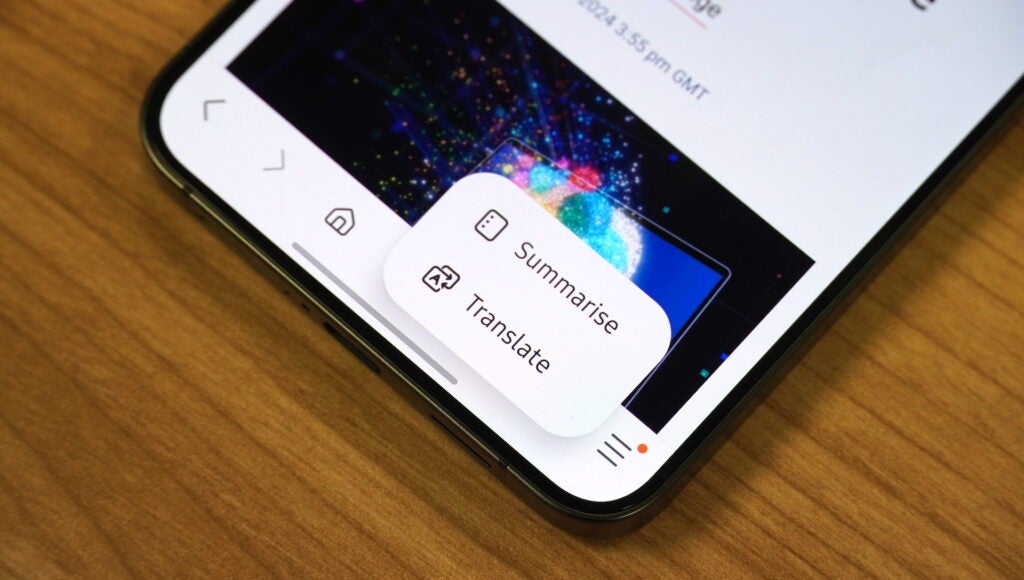

Samsung is using generative AI elsewhere too, notably in both the default keyboard and the Notes app. The keyboard can now write messages for you, altering your tone – formal, chatty, etc – and this works alongside the translation features.
However, my favourite way Samsung is using AI is within the Notes app. Here you can not only transcribe a conversation (it can even tell the difference between different speakers) but also have the AI automatically pick out the important points and cut everything down into bullet point form. It can even format the text, adding in bolded elements, if you wish.
Now, the controversial point is that Samsung is switching back to its multi-chip strategy with the S24 series, no longer simply using Qualcomm silicone across the whole range.
In multiple regions including the UK, the S24 and S24 Plus are powered by an Exynos 2400 for Galaxy while in the US those two phones have the Snapdragon 8 Gen 3 for Galaxy. All regions use the 8 Gen 3 for the Ultra. With the Plus model, that’s paired with the same 12GB of RAM as the S24 Ultra, and an upgrade on the 8GB of the regular S24.
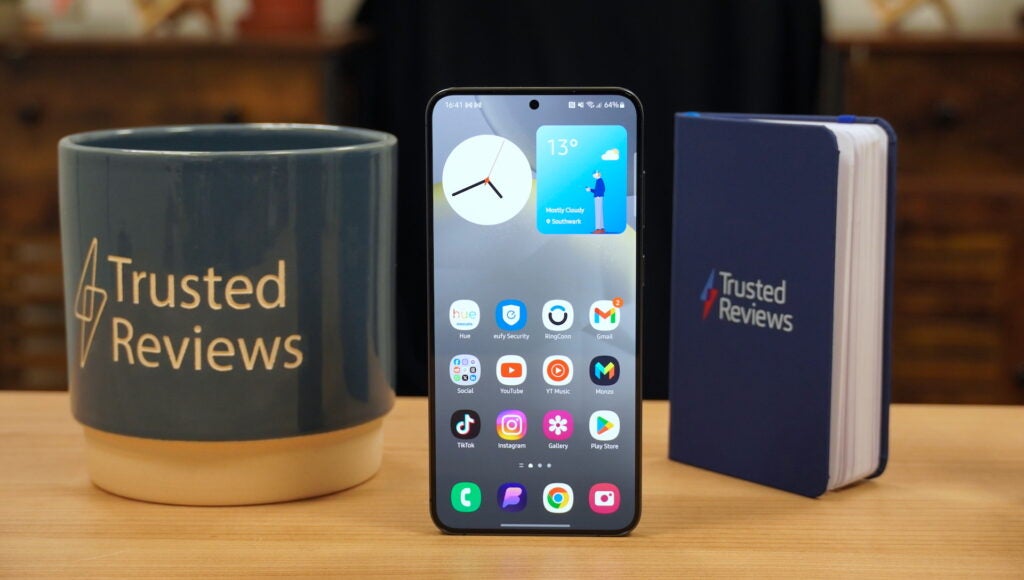

While Samsung claims that the two are pretty much identical in terms of power, there are some differences in performance between the Exynos-equipped Galaxy S24 Plus and the Snapdragon-powered S24 Ultra in our benchmark tests, with the latter pulling quite far from the former in the graphics department despite having the same QHD resolution.
That’s not really noticeable in everyday use however; the phone is rapid, responsive and generally a joy to use without even a hint of stutter or lag. It can also handle high-end games like Call of Duty Mobile and Genshin Impact without much issue, providing a solid all-round experience, even if it’s not quite as performative as the top-end S24 Ultra, or even the US variant with the 8 Gen 3.
It does get a little hot over longer periods of gaming in particularly demanding titles, but not uncomfortably so. If keeping cool over long periods of gameplay is important to you, I’d recommend looking at a dedicated gaming phone.
Software
- Android 14
- OneUI 6.1 has handy new features
- 7 years of OS upgrades promised
The Samsung Galaxy S24 Plus, like the rest of the S24 collection, comes with Android 14 out of the box with Samsung’s OneUI 6.1 on top. The OneUI experience has been pretty consistent through the years, offering a stylised version of stock Android with some pretty handy features – and that continues with its latest iteration.
That means you’ll find premium software elements like a customisable lock screen, complete with widget support, an always-on display that, like an iPhone, can display your entire lock screen including your wallpaper, a redesigned quick control UI that’s much easier on the eyes and much more.
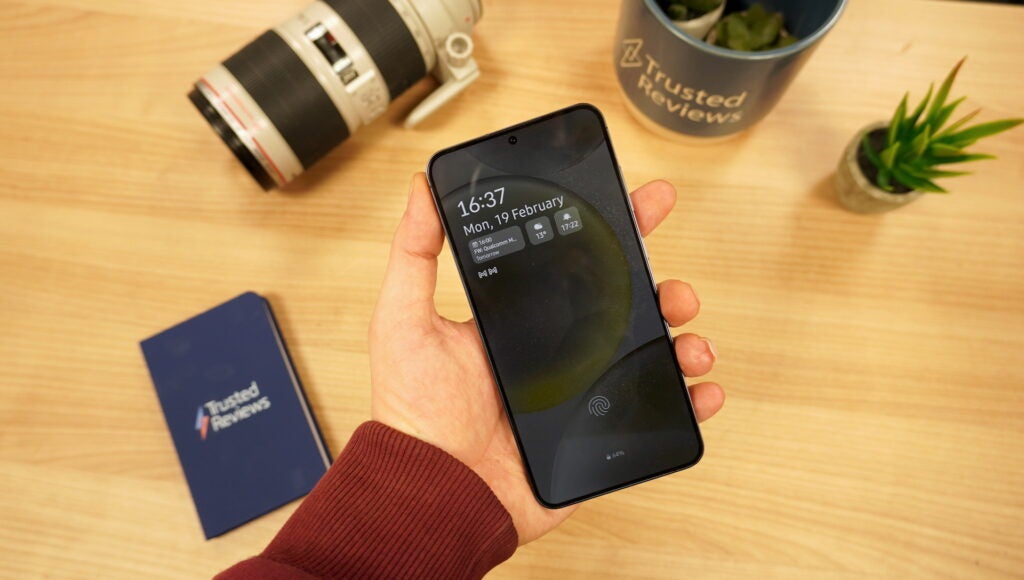

There are still some frustrations when using OneUI, like the plethora of pre-installed Samsung-branded apps, from Samsung Pass to SmartThings, further exacerbated by the fact that Samsung won’t install the Google variants of its apps (Wallet, Google Keyboard, etc) when copying over data from a previous phone. It’s not something that a trip to Google Play won’t solve, but it’s still pretty cheeky, Samsung.
While previous Samsung flagships already had some of the best long-term software support around at four years of OS upgrades and five years of security patches, the company has upped its promise with the S24 range to a whopping seven years of OS upgrades that’ll take it through to Android 21. That allows the range to compete with the Google Pixel 8, the first of the big players to offer the 7-year OS upgrade promise.
Regardless of Samsung’s motivations, it’s great news for consumers that means the phone should continue to get better with new features for quite some time.
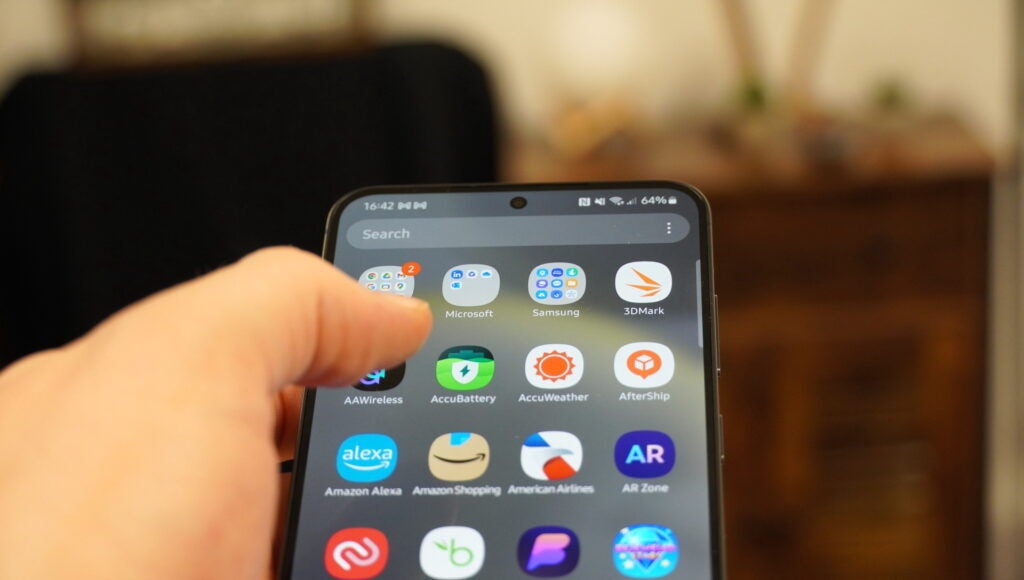

Battery life
- Fairly large 4900mAh battery
- Easy all-day battery life
- 45W charging speeds
Battery life is an area where the Galaxy S24 Plus excels, not only because of a more efficient chipset and a slightly larger battery that measures in at 4900mAh compared to the 4700mAh of its predecessor, but because of the jump to LTPO technology that lets the display drop to 1Hz to save battery life.
The combination of all of the above means that the S24 Plus doesn’t falter when it comes to delivering true all-day battery life.
In my experience, a combination of texting, scrolling through TikTok, replying to emails and the occasional call, over an average of 16 hours, would generally leave me with 50-60% in the tank. With usage like that, I managed to squeeze close to two days of battery life from the device, only needing a top-up by 6pm on the second day of use.
Of course, usage will vary depending on how often you use the device, but in my experience, it’d deliver around 6-7 hours of screen-on time with a healthy amount of screen-off usage too.
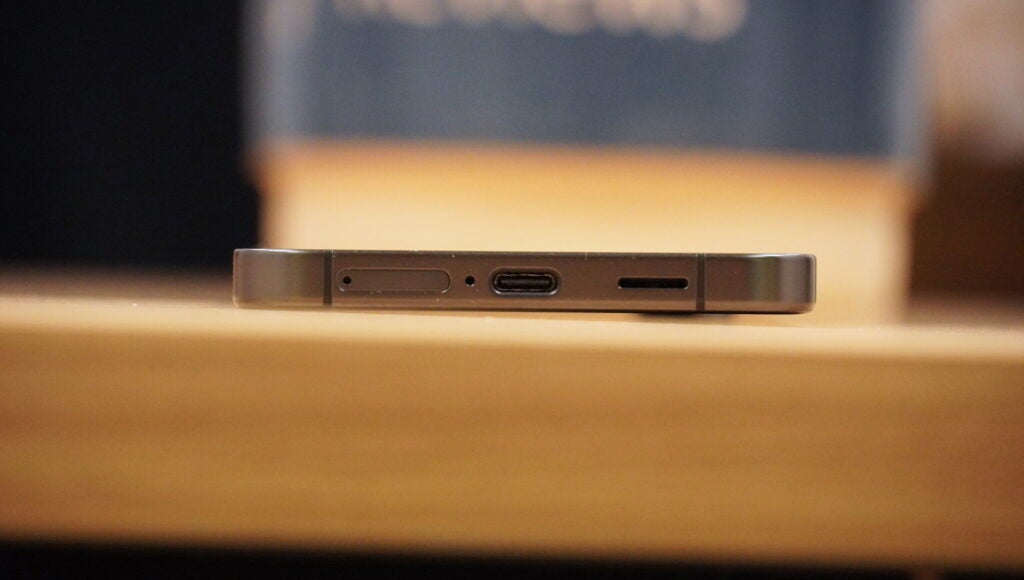

Samsung has never been the creme of the crop when it comes to fast charging, and that’s not going to change with the Galaxy S24 range. More specifically, the Galaxy S24 Plus has the same 45W charging as the S24 Ultra, but you won’t get a charger in the box, so your charge times will vary.
Using a third-party 60W charger I had handy, the Galaxy S24 Plus regained 50% charge in 34 minutes, while a full charge took 81 minutes. That’s not exactly slow, but compared to the OnePlus 12 which delivers a full charge in 26 minutes, it’s not exactly rapid either. You can opt for wireless charging instead, but at 15W, it’s significantly slower to charge than the wired alternative.
Should you buy it?
You want a solid all-rounder
The Samsung Galaxy S24 Plus is a good, if not exceptional, all-rounder, with a nice screen, powerful processor and a premium build.
You want the best camera performance
The Samsung Galaxy S24 Plus’ camera setup remains unchanged for the third year running. That means other premium phones like the Pixel 8 Pro, OnePlus 12 and the Galaxy S24 Ultra all offer a more versatile shooting experience.
Final Thoughts
The Samsung Galaxy S24 Plus, in terms of hardware, is a near-carbon copy of last year’s Galaxy S23 Plus.
Yes, there are upgrades here that I appreciate, like the screen increase to 6.7 inches, the introduction of LTPO tech for the first time and the Exynos 2400 chipset, but for a phone that costs a grand, I was expecting something a little more exciting – especially when looking at the premium competition like the OnePlus 12.
That’s especially true when it comes to key elements like camera tech that remains completely untouched for the third year in a row. It’s a fine everyday snapper, but it’s no longer exceptional. All this while the more expensive Ultra model has seen several camera upgrades in the same period.
Thankfully there are elements here that pull it back from the brink, like the capable (and very handy) Galaxy AI, a lovely 6.7-inch QHD screen, the customisable OneUI 6 and a whopping seven years of OS upgrades, but if next year’s S25 Plus again looks the same, we might have a problem on our hands.
FAQs
That depends on where you are in the world. Those in the US get the Snapdragon 8 Gen 3 for Galaxy, while those in the UK, Europe and other regions get the Exynos 2400.
Yes, it supports 45W charging but there isn’t a charger in the box.
















